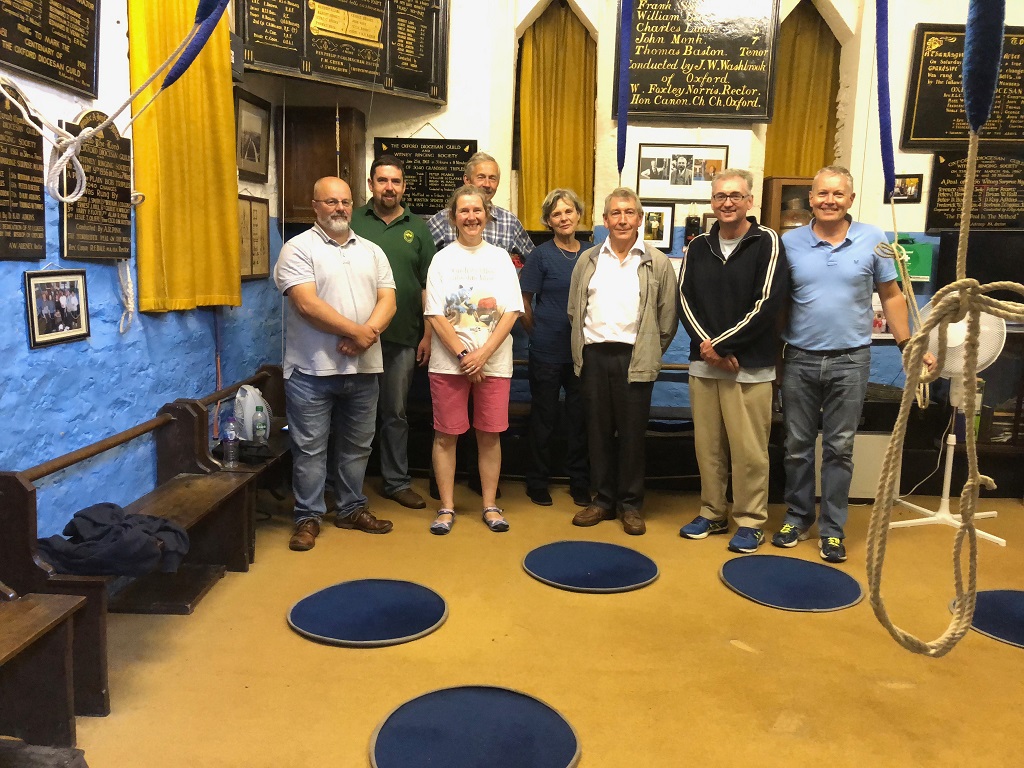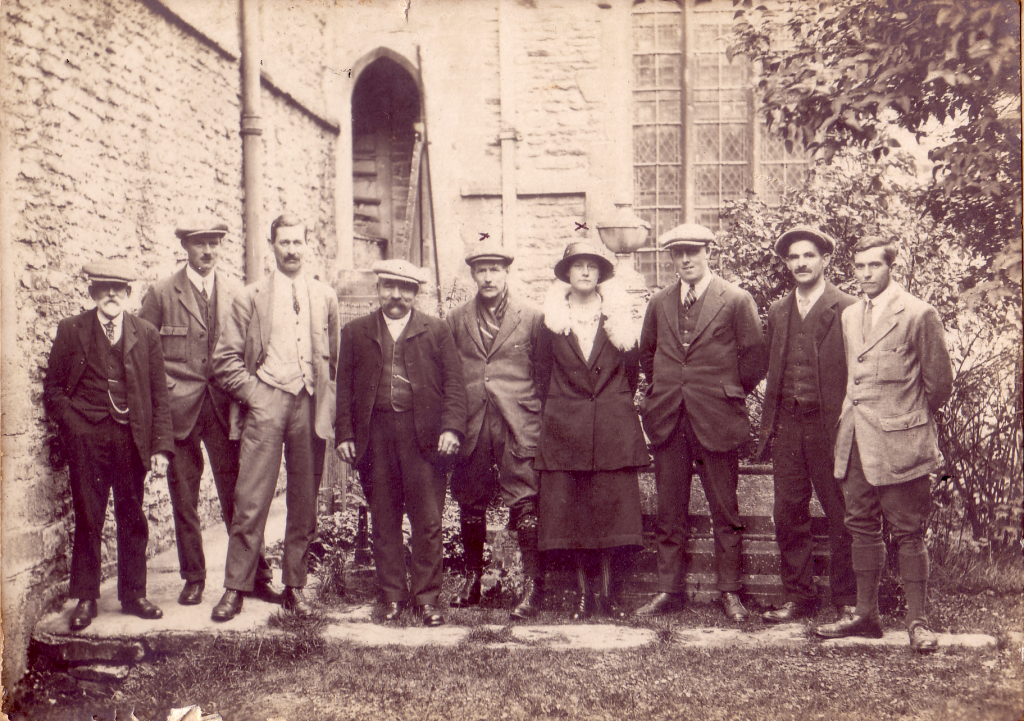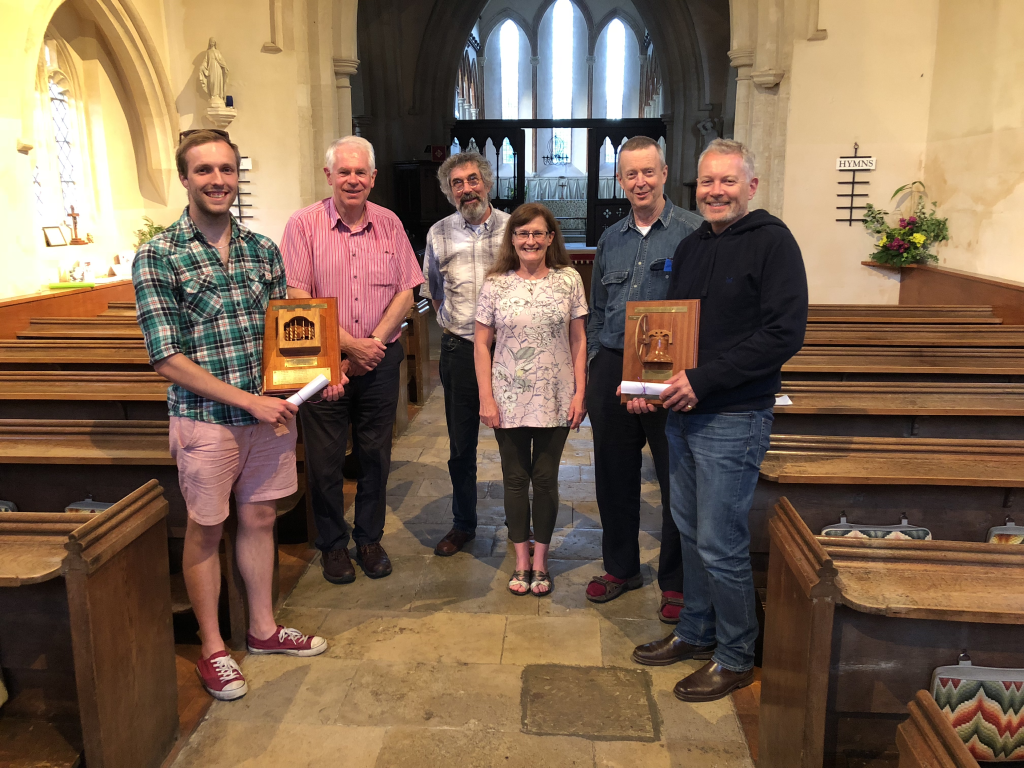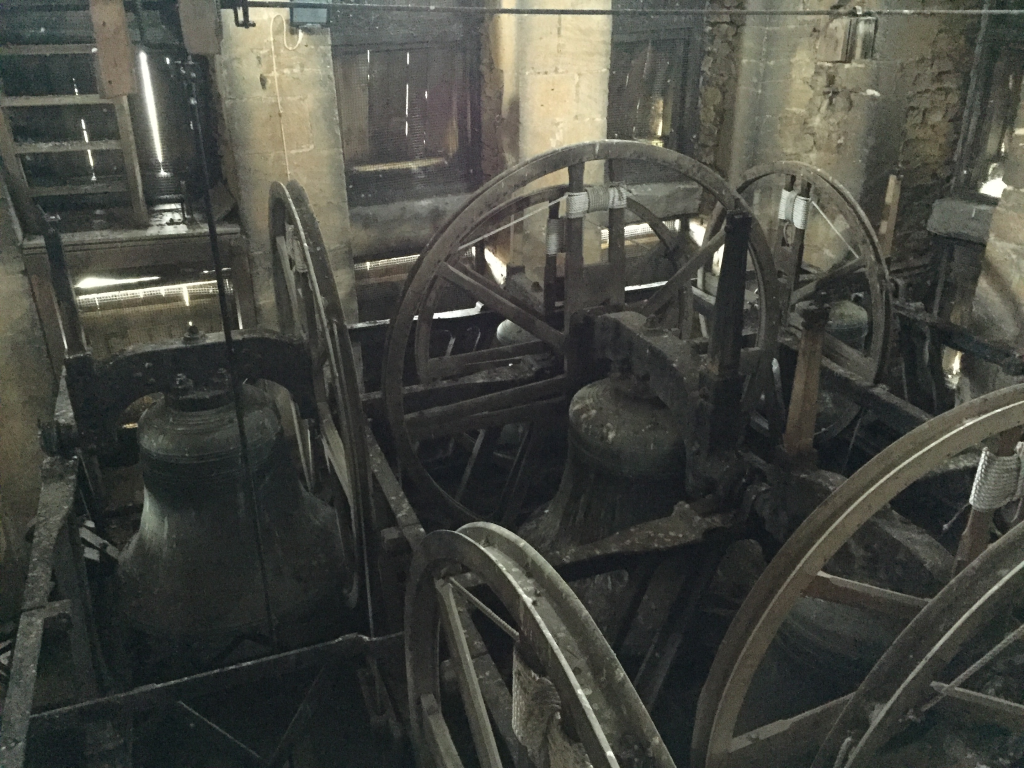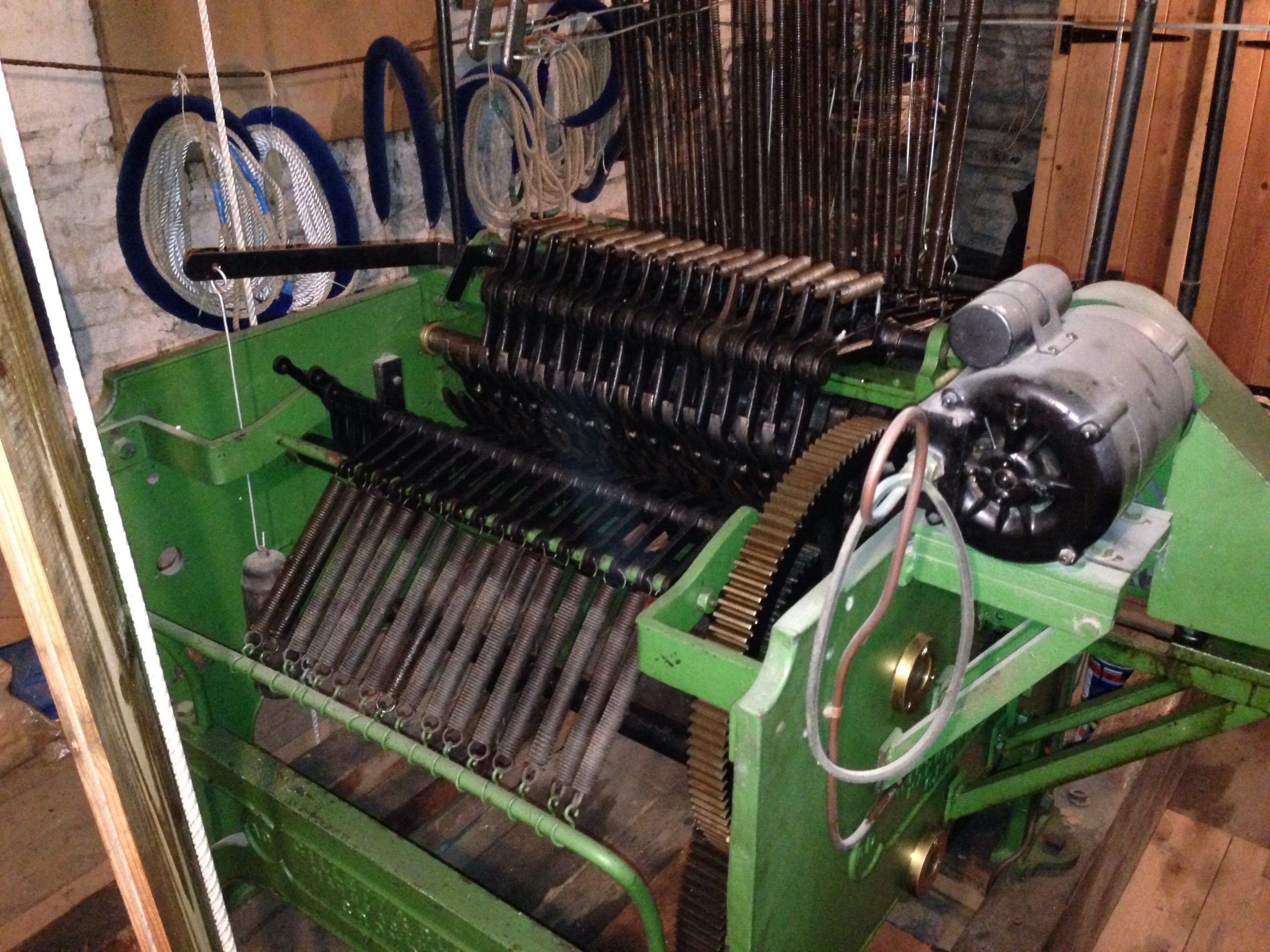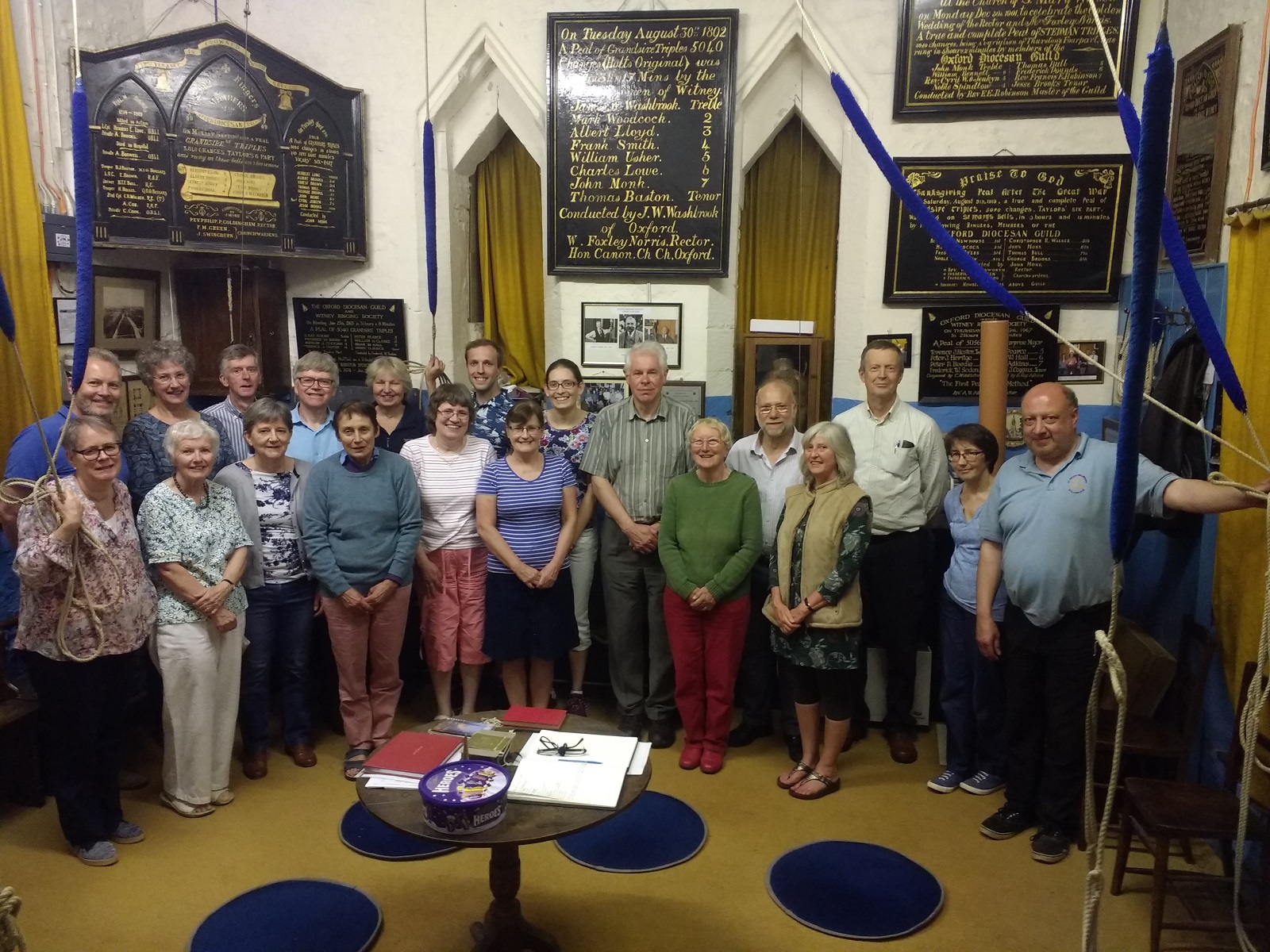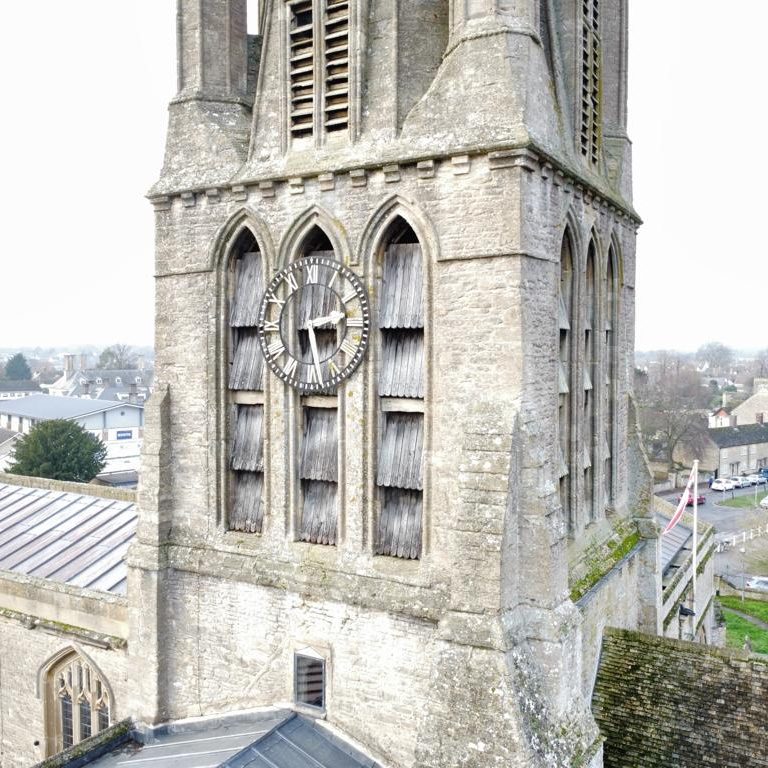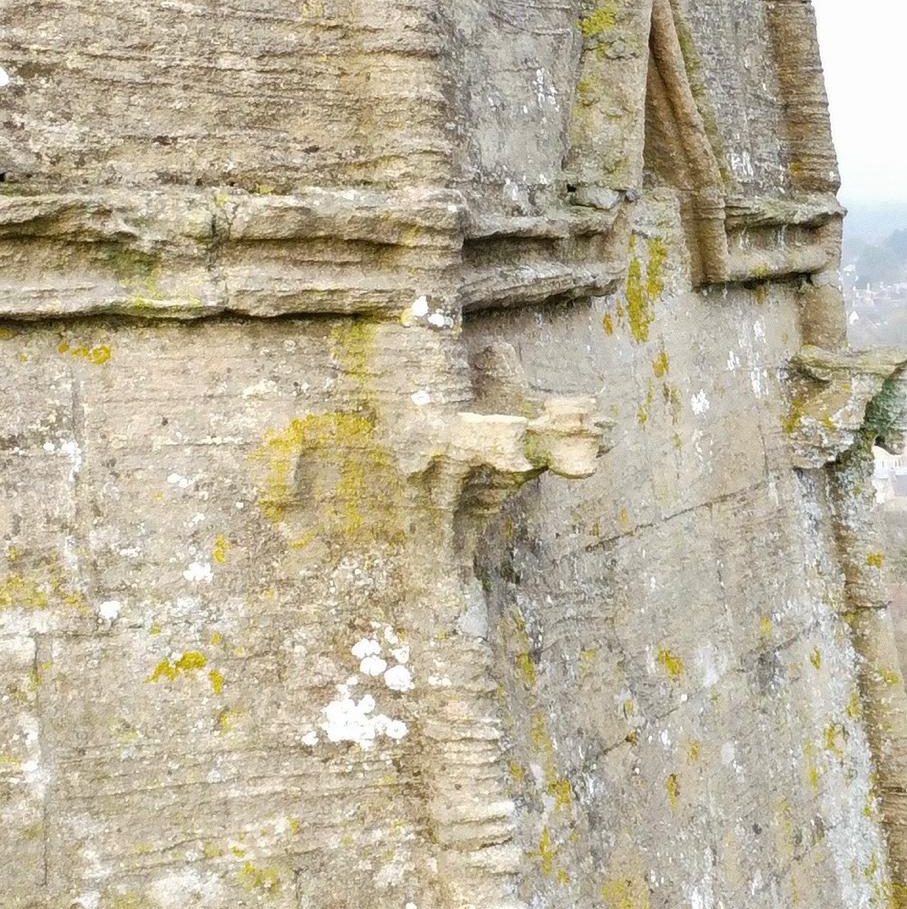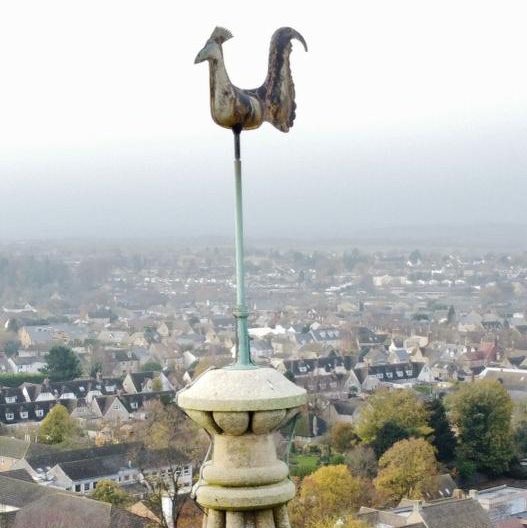Ringing at St Mary’s, Witney
8 bells (16-3-11). Stairs – 48 steps. Toilet. Function Room.
OX28 4BA. (Locate using Google Map or OS Map or OpenStreetMap).
Practice: Tuesday 19:30 – 21:00; Triples & Major practices rotate between the Branch 8-bell towers most months. Please confirm special practices with the Branch Ringing Master.
Sunday: 09:45 – 10:45
About us
St Mary’s Church, Witney
Witney is pleasantly situated in the valley of the River Windrush and now has a population of over 25,000. There is local evidence of Iron Age, Roman, Saxon, Norman and extensive medieval settlement. Witney was visited by the famous Norman King John and was, until recently, world famous for its blanket industry, dating from Norman times.
The church of St Mary the Virgin stands at the south end of a large well kept green that was given to the town by the Duke of Marlborough. The church is one of the most beautiful and interesting buildings in the diocese of Oxford. It is almost certain that a Saxon church stood on the site, succeeded by a Norman Church, of which the porch is one of the most prominent remains. Further additions have resulted in a mixture of styles, including Early English. Some of the stone carvings on the exterior of the church indicate the town’s long connection with the textile industry.
In 1943 the top of St Mary’s steeple was sheared off by a plane towing a glider. The glider got away, but sadly the four crewmen of the plane perished.
About us
The Bells
St Mary’s eight bells are housed in a cast iron frame in a tower and steeple which rises 156 feet from the ground. There were originally five bells but three have been added to complete the present ring of eight which date from 1660 to 1938.
In 1573 the church was in debt for casting the great bell and the third, and in 1590 the vast sum of £21 16s. 11d. was spent casting the second bell and making alterations to others.
Death-watch beetle invaded the old wooden frame, making it unsafe, and so a complete overhaul was undertaken to Taylor’s bell founders of Loughborough. The bells were re-hung in a new metal frame. Three bells were recast and the entire ring retuned. The masonry was also strengthened and all the work completed in 1938.
St Mary’s also has a fine carillon that strikes every three hours. Its original tunes are ‘Hanover’, ‘The Bluebells of Scotland’, ‘The Bailiff’s Daughter’, ‘The Last Rose of Summer’, and ‘Home Sweet Home’.
In October 1977 new ringing mats of royal blue were kindly donated in memory of a local lady and a local ringer.
The current tower captain is Andrew Goldthorpe. The tower has a small but dedicated band of ringers who practice on Tuesday evenings at 19:30 until 21:00. Sunday ringing is at 09:45. St Mary’s bells are popular with visiting ringers, who are made most welcome, along with all learners. The branch 8-bell towers take turns in hosting a “Triples and Major” practice night most months but all the practices are inclusive of all abilities. Please check with the Branch Ringing Master for special practices.
About us
Details and inscriptions of the bells
TREBLE (E):
5.3.23. c.w.t.
‘Augustine Batt Thos Saunder 1765’
Recast 1938
2 (D♯):
6.0.15. c.w.t.
‘Recast by H. Bond & Son Bells Founders, Burford, Oxon. 1885.
W.Foxley Norris, Rector
J. Habgood J. Stodart, Church Wardens
1885
Gloria Tibi Domine’
Recast 1938
3 (C♯):
6.3.19 c.w.t.
‘May the church forever flourish 1761’
Recast 1938.
4 (B):
7.3.24 c.w.t.
‘Philip Horn, Anthony Geeves, Arthur Brooks, William Wearing, Church Wardens
Henry Bagley made mee
1st January 1731′
About us
Details and inscriptions of the bells
5 (A):
7.2.12 c.w.t
‘Henry Dorne, Michael Dolley, Church Wardens
TR 1765′
6 (G♯):
8.2.10 c.w.t.
‘Prosperity to this parish and the trade there of
AR 1755′
7 (F♯):
12.0.24 c.w.t.
‘William Tanner, William Smith C. W. 1660’
Tenor (E):
16.3.1. c.w.t.
‘I to the church the living call and to the grave I summon all.
J.N. Lawrence, Henry Salmon Church Wardens
Mears of London Fecit 1815′
